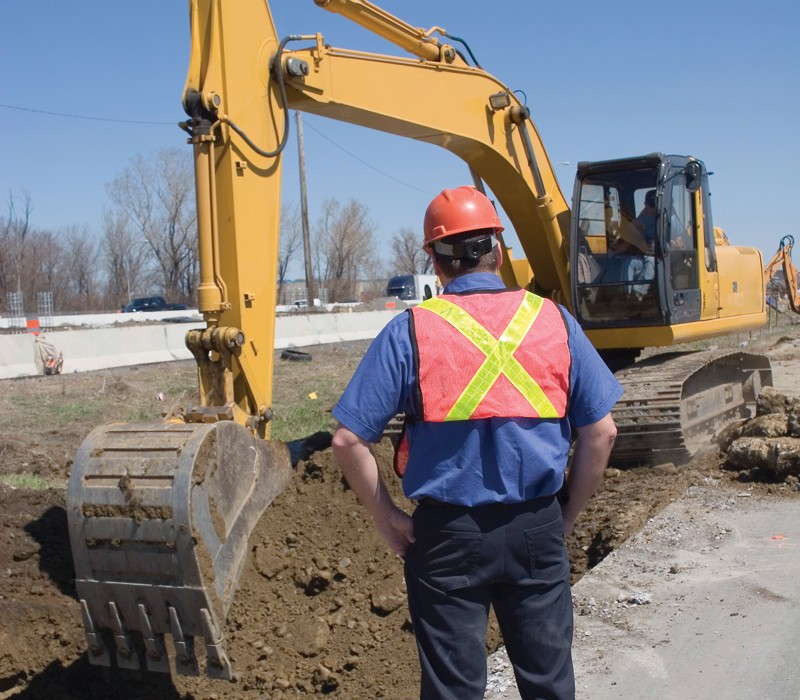Contractor safety
Being aware of the location of power lines — both overhead and underground — and keeping a safe distance are two of the most important steps you can take to safeguard yourself and your co-workers on the job.
Please learn more about safe practices to follow on construction sites and in workplaces.

Maintain a Circle of Safety
- The 20 foot rule for cranes and derricks – Occupational Health and Safety Administration (OSHA) regulations require that contractors and workers operation cranes or derricks stay a minimum of 20 feet away from overhead power lines.
- Keep everything – you, the tools and materials you are handling, and the equipment you are operating away from all power lines. Not only is this an important safety rule, it is OSHA regulation and it is a law. Those caught violating the Circle of Safety can be fined.
- If you cannot get your work done without getting within the minimum clearance distances to a power line as defined by OSHA, contact us at 1-888-221-7070. We will work with you to help ensure that you get your work done safely.
Heavy equipment and power lines
Careful positioning of heavy equipment is required to ensure safety for workers and equipment operators. The locations for heavy equipment such as cranes should be planned jointly in advance by us and the contractor. However, even with planning, heavy equipment and work operations may need to be located near high-voltage lines. In this case use a safety watch. Lines may also need to be de-energized.
Safety watch
A safety watch person should be positioned near the heavy equipment the entire time it is being operated near high-voltage lines. The watch's only duties should be observing the work and communicating with the operator to ensure the equipment never violates the Circle of Safety.
De-energize the lines
If the equipment must operate within the OSHA defined minimum operating distance, contact us about proper safety precautions before starting work. The lines might be able to be de-energized or grounded or other proactive measures taken.
Tools, equipment and other conductive materials
Heavy equipment isn't the only threat to the Circle of Safety. Lengthy tools and equipment such as bullfloat handles, rebar and long sections of metal conduit are just a few of the conductive objects that can break the Circle of Safety when used near power lines. Always remember the Circle of Safety is not just for you, but includes anything you may be carrying or working with.
Digging
Always call 811 to have your underground utilities located before digging to avoid making contact. If original markings are destroyed due to weather or heavy construction, call back to have the area remarked.
If contact occurs
If electrical contact does occur, follow these guidelines:
- If you're in your vehicle or equipment, stay put. This is your safest option until help arrives.
- Warn others to stay away from the area until emergency and power company officials have arrived to turn off the power.
- If you are on the ground, stay on the ground – and stay away. Coming close to the energized equipment can only increase the danger.
- If you can move the equipment away from the lines, move it. If not, the operator should stay put until the lines can be de-energized.
- If you must leave the vehicle because of fire or some other life-threatening situation, JUMP, with both feet together. Hop with both feet together until you're safely away. Never step down or touch the ground and the piece of equipment at the same time or you could be electrocuted.
- If the power line has fallen on the ground, or on some other object or equipment, always assume it is energized. Stay clear and call us immediately at 1-888-221-7070.
Your commitment
The best way to avoid injury from power lines is to make a personal commitment to safety. Keep in mind the following principle:
The most valuable resource of any job at any time is never the materials, the equipment, the profit or the deadline. The most valuable resource, without exception, is always human life.